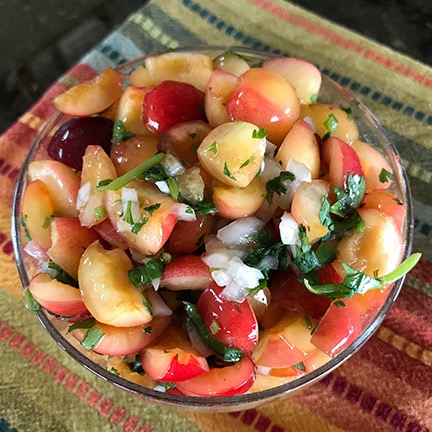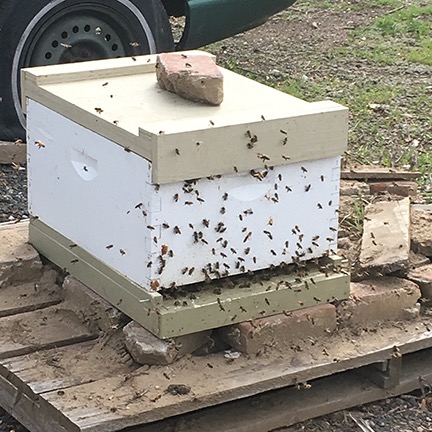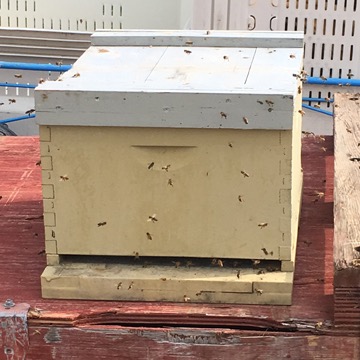Can you believe this is my thirteenth season?
Cherry drying season began yesterday for me. It was the earliest start I’ve ever had. At this point, I expect to be on contract until the beginning of August.

Here’s a shot of me over the cherry trees a few years ago in my first R44.
I started doing this in 2008, the same summer I turned down a job offer to be a tour pilot in Alaska. That job would have had me landing on glaciers, touring fjords, and sling-loading food to dog sled camps. But it also had very long work days, only mediocre pay, and a long season away from home. I was married at the time — hey, everyone makes mistakes — and my wasband didn’t want me to be away from home so long. So when a chance to spend just about a month flying in Washington state came along, I took that instead. Any opportunity to get out of Arizona’s oppressive summer heat.
At the time, although I hoped it would become an annual gig, I never in my wildest dreams expected it to become my primary source of income. Back in 2008, I was still writing computer books for a living, just starting a slide down from a career high in 2004/05. I’d had a helicopter since 2001 but couldn’t make money flying it. The first R44 came in 2005, but it wasn’t until 2007 when I got some lucrative wildlife survey work that the business started turning a profit. Cherry drying carried on that trend. By 2013, when I shed my wasband and moved to Washington full time, I was making more as a pilot than as a writer. (Let’s face it: no one is buying computer books these days.)
Business boomed over the years. For a while, I kept building my client base — and the team of pilots who worked with me to serve them. Things leveled off a year or two ago and I generally have the same clients and contracts every year. My team now consists of 5 pilots (including me), most of which come on about 2 weeks after my season has started and leave 2 to 3 weeks before my season ends.

My R44 Raven II helicopter, “Mr Bleu,” parked out at his summer cherry drying base. I put on his blade cozies to protect the blades from forecasted hail in thunderstorms this weekend. Beyond him is a Hiller belonging to another pilot who isn’t working with me; all my guys fly R44s.
My formula is simple: work as a team to serve all the clients equally. Keep all pilots flying as much as possible, no matter which client calls. If only one big orchard needs drying, put multiple pilots on it to get it done fast. Don’t contract for more acreage than we can cover within a reasonable time. Oh, and make sure all of the orchards are in a tight little area so pilots don’t waste time deadheading from one orchard to another.
With few exceptions, my team is different every year. While I’d love to work with the same group of guys every year — 2016’s team really stands out for how well we worked together on the rainiest year I’ve ever seen here — few guys seem interested in doing this every year. They don’t see it the way I did: as a paid vacation with some time off for paying work in a place with lots of recreational opportunities. (Hell, I bought a boat here — before I moved here — so I could get out on the river during my cherry season.) The ones who do see that — Gary comes to mind — come again and again. Most others drift away, so I wind up building new teams every year.
Things will get busy for me in mid-June, when my guys start showing up. I’ll show them the orchards — probably from the air — give them Google Maps references with orchard locations, and probably fly with them so they know what they need to do. Then I’ll leave them alone until rain looks likely. When the calls start coming, I’ll start dispatching — by phone and on the radio. We’ll all keep flying until the work gets done or it gets dark, whichever comes first.
Of course, I’ll have my GoPros hooked up for most of my flights, collecting new footage for my YouTube channel. Folks really seem to love cherry drying videos — which is something I can’t quite understand. There’s really nothing exciting about the work.
This video from 2016 is my most popular cherry drying video so far, with over 735K views. As I write this, it’s averaging 2,000 views a day.
While the season is on, I’ll find an orchard where I can get permission for us to pick our own cherries. Last year, it was a block full of Rainiers that didn’t get picked because they just didn’t get red enough. (Can you imagine?) On really nice days with no chance of rain, I’ll lend my kayaks or maybe my bicycle out to the pilots. Or maybe I’ll take one or two of them out on my boat. Because we’re all on call during daylight hours 7 days a week and the days are so long, there’s no opportunity to party. We always have to be ready to fly at first light.
Did I mention that none of us can leave the area during the entire time we’re under contract? It’s almost like being under house arrest for me. For them — well, if they play it right, it’s that paid vacation I mentioned above.
Near the end of the season, I’ll have one of my end-of-season BBQs. I’ll smoke up a few racks of ribs and roast a chicken or two. I’ll invite my guys and maybe a few other pilots I’ve met during the season. Then, as the cherries are picked out and the contracts end, the guys will leave, one by one. By the end of July, I’ll be the only one left to cover the few orchard blocks that are yet to be picked. When they’re done, I’m done.
And that’s it for me for the year.
Well, not really. I still do charter flights and tours. And the occasional photo flight. And yes, I still go flying just for fun.
But once my last contract has ended, I usually spend some time trying to get my life back to normal, taking trips out of town and trying hard not to check the weather every half hour. I usually go on vacation, too. In 2017, I finished just in time to go to Oregon to watch the total eclipse of the sun. Other years, I’ve taken my camper into the North Cascades, Canada, and the Olympic Peninsula. Last year, I took a photo cruise among the San Juan Islands. This year, I’m going to Alaska for 10 days. (If I play my cards right, I might go out and land on a glacier with the folks I almost went to work for all those years ago.)
And that’s my cherry drying season routine. Did I know back in 2008 that it would become such a vital part of my financial well-being? Hell no.
But in all honesty, I never expect anything to work out the way it actually does. I’ve just learned to go with it. And I’ve got no complaints about this.





